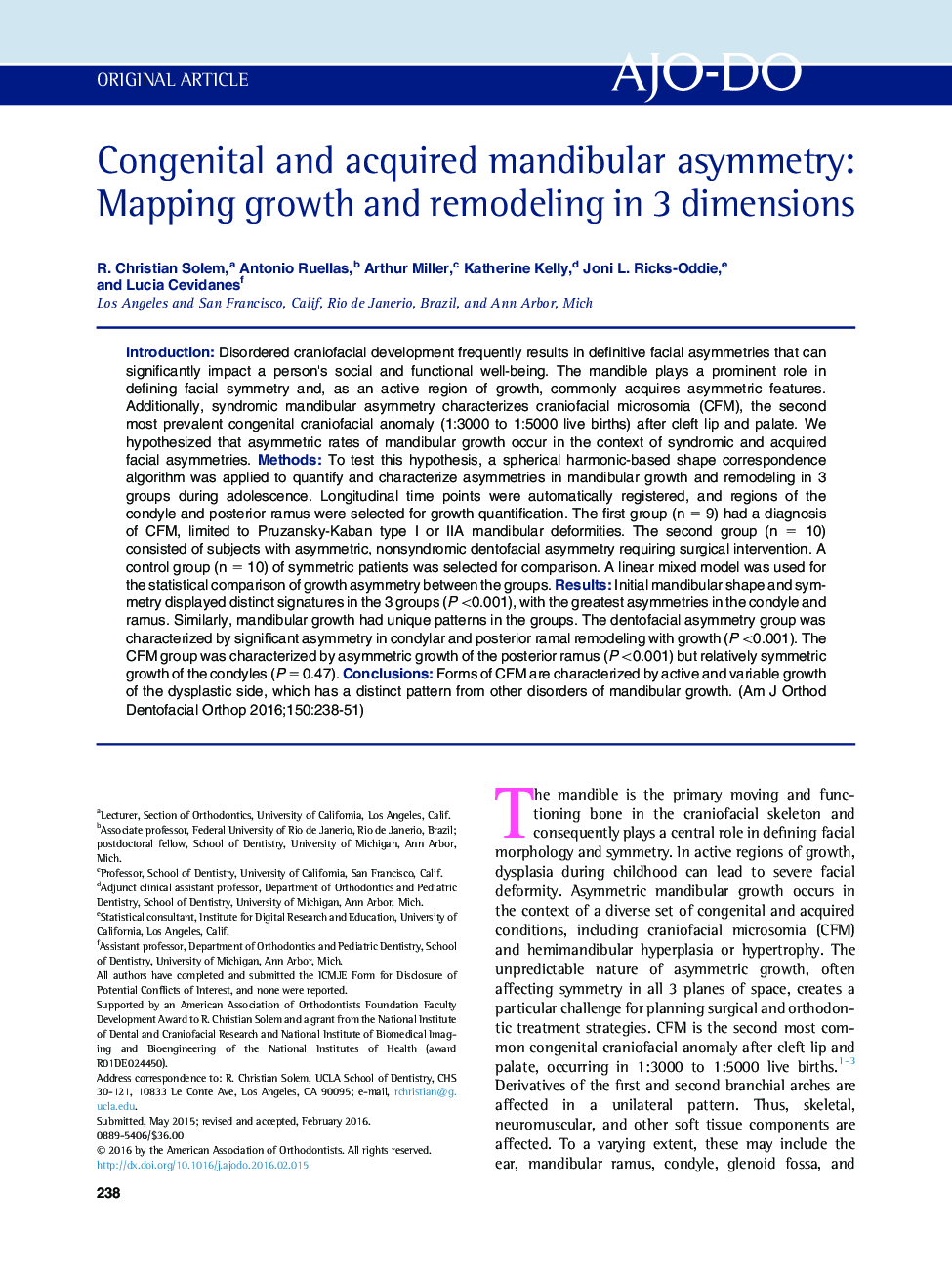| Article ID | Journal | Published Year | Pages | File Type |
|---|---|---|---|---|
| 3115409 | American Journal of Orthodontics and Dentofacial Orthopedics | 2016 | 14 Pages |
•We assessed mandibular growth and remodeling asymmetries in adolescents.•Condylar growth rates were similar bilaterally in those with craniofacial microsomia (CFM).•Growth of the dysplastic condyle in CFM is directed laterally.•Remodeling of the posterior ramus is decreased on the dysplastic side in CFM.•In noncongenital dentofacial deformity, mandibular growth is more unilateral and condylar.
IntroductionDisordered craniofacial development frequently results in definitive facial asymmetries that can significantly impact a person's social and functional well-being. The mandible plays a prominent role in defining facial symmetry and, as an active region of growth, commonly acquires asymmetric features. Additionally, syndromic mandibular asymmetry characterizes craniofacial microsomia (CFM), the second most prevalent congenital craniofacial anomaly (1:3000 to 1:5000 live births) after cleft lip and palate. We hypothesized that asymmetric rates of mandibular growth occur in the context of syndromic and acquired facial asymmetries.MethodsTo test this hypothesis, a spherical harmonic-based shape correspondence algorithm was applied to quantify and characterize asymmetries in mandibular growth and remodeling in 3 groups during adolescence. Longitudinal time points were automatically registered, and regions of the condyle and posterior ramus were selected for growth quantification. The first group (n = 9) had a diagnosis of CFM, limited to Pruzansky-Kaban type I or IIA mandibular deformities. The second group (n = 10) consisted of subjects with asymmetric, nonsyndromic dentofacial asymmetry requiring surgical intervention. A control group (n = 10) of symmetric patients was selected for comparison. A linear mixed model was used for the statistical comparison of growth asymmetry between the groups.ResultsInitial mandibular shape and symmetry displayed distinct signatures in the 3 groups (P <0.001), with the greatest asymmetries in the condyle and ramus. Similarly, mandibular growth had unique patterns in the groups. The dentofacial asymmetry group was characterized by significant asymmetry in condylar and posterior ramal remodeling with growth (P <0.001). The CFM group was characterized by asymmetric growth of the posterior ramus (P <0.001) but relatively symmetric growth of the condyles (P = 0.47).ConclusionsForms of CFM are characterized by active and variable growth of the dysplastic side, which has a distinct pattern from other disorders of mandibular growth.
